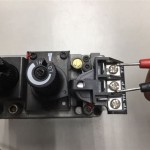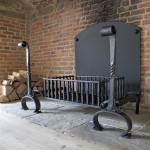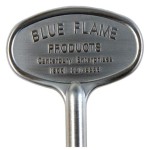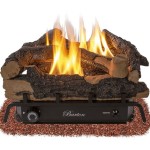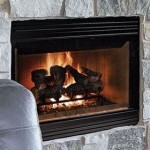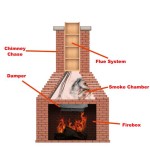Gas Fireplace Smells Like Burning Plastic: Identifying Causes and Solutions
A gas fireplace is often a valued amenity, providing supplemental heat and aesthetic appeal to a living space. However, the presence of unusual odors, particularly one resembling burning plastic, can be unsettling and indicative of potential issues. This article aims to provide a comprehensive overview of the causes of this disconcerting smell and outline appropriate troubleshooting and resolution strategies.
The presence of a burning plastic smell emanating from a gas fireplace should never be ignored. It may be a minor issue, such as dust accumulation, but it could also signal a more serious problem involving damaged components or improper installation. A prompt and thorough investigation is crucial to ensure the safe and efficient operation of the appliance.
New Fireplace Break-In Period
One of the most frequent causes of a burning plastic smell in a new gas fireplace is the "break-in" period. During manufacturing, various oils, lubricants, and protective coatings are applied to the fireplace components. When the fireplace is first operated, these substances heat up and off-gas, producing an odor often described as being similar to burning plastic or chemicals. This smell is generally temporary and should dissipate with continued use over several hours.
To mitigate the smell during the break-in period, ensure adequate ventilation in the room. Open windows and doors to allow the fumes to escape. Run the fireplace on a medium setting for several hours, monitoring it closely. If the smell persists after a significant amount of usage or becomes excessively strong, further investigation is required. Contacting the manufacturer or a qualified technician is advisable to rule out any underlying issues.
The length of the break-in period can vary depending on the make and model of the fireplace, as well as the types of materials used in its construction. Refer to the owner's manual for specific instructions and recommendations regarding the initial operation of the fireplace.
Foreign Objects Inside the Fireplace
Another common reason for a burning plastic smell is the presence of foreign objects inside the fireplace. These objects can range from small pieces of plastic packaging or debris accidentally dropped into the unit to more substantial items lodged within the burner assembly. When the fireplace is ignited, these objects melt or burn, releasing the characteristic plastic odor.
To inspect for foreign objects, first ensure the fireplace is completely turned off and cooled down. Disconnect the gas supply to prevent accidental ignition. Carefully examine the firebox, burner area, and any accessible compartments for any signs of debris. Use a flashlight to illuminate hard-to-reach areas. Remove any foreign objects you find, taking care not to damage any of the fireplace components. If the object is lodged in a difficult-to-reach area or you are unsure how to safely remove it, consult a qualified technician.
Preventing the introduction of foreign objects is key to avoiding this issue. Keep the area around the fireplace clean and free of clutter. Be mindful of any objects that could potentially fall or be blown into the fireplace opening. Regular inspection and cleaning can help identify and remove any debris before it becomes a problem.
Overheating or Damaged Components
The most concerning cause of a burning plastic smell is overheating or damage to the fireplace's internal components. This can occur due to a variety of factors, including malfunctioning parts, improper ventilation, or incorrect gas pressure. Over time, the intense heat produced by the fireplace can degrade plastic components, such as wiring insulation, control modules, or decorative elements, leading to the release of burning plastic odors.
Identifying damaged components requires a thorough inspection of the fireplace. Look for signs of melting, discoloration, or charring on any plastic parts. Pay close attention to wiring connections, gas valves, and control modules. If you suspect a component is damaged, do not attempt to repair it yourself. Contact a qualified gas fireplace technician immediately for diagnosis and repair.
Operating a fireplace with damaged components can be dangerous and lead to further damage or even a fire. It is crucial to address any signs of overheating or component failure promptly. Regular maintenance and inspections by a qualified technician can help identify potential problems before they escalate.
Incorrect gas pressure can also contribute to overheating. If the gas pressure is too high, the fireplace will burn hotter than intended, potentially damaging internal components. A qualified technician can check and adjust the gas pressure to ensure it is within the correct operating range.
Furthermore, proper ventilation is essential for preventing overheating. Ensure that the fireplace's ventilation system is not obstructed by debris or improper installation. Insufficient ventilation can trap heat inside the fireplace, leading to component degradation and the release of burning plastic odors.
Gas fireplaces often include a pilot light that is always burning. If the flame impinges directly on a plastic component, it may slowly degrade the material over time, eventually leading to a burning plastic smell. A professional gas technician can adjust the pilot light position to prevent this situation.
Certain decorative logs and ember beds used in gas fireplaces can also emit odors when heated, especially if they are not designed for use in that specific fireplace model. Always use accessories and replacements specifically recommended by the fireplace manufacturer.
In addition to plastic components, combustible materials such as insulation near the fireplace can also produce a burning smell if they are too close to the heat source. Check the clearances around the fireplace to ensure that all combustible materials are at a safe distance.
Dust accumulation, a common issue with any heating appliance, can also contribute to odors. As dust settles on hot surfaces inside the fireplace, it can burn and produce a smell. Regular vacuuming of the fireplace interior, when the unit is cool, can help prevent this issue.
The use of harsh cleaning chemicals around the fireplace can also leave residue that emits a burning smell when heated. Avoid using strong solvents or abrasive cleaners on the fireplace exterior. Instead, use a mild soap and water solution for cleaning.
Animals, such as rodents or insects, can sometimes nest inside a fireplace, especially if it is not used frequently. These animals can leave behind droppings and other materials that produce a burning smell when the fireplace is turned on. Inspect the fireplace regularly for signs of animal activity and take appropriate measures to remove any pests.
Finally, it is important to consider the age of the fireplace. Older fireplaces may have components that are nearing the end of their lifespan and are more prone to failure. If your fireplace is several years old, it may be time to consider replacing it with a newer, more efficient model.
When dealing with a gas fireplace and a burning plastic smell, safety should always be the top priority. If you are unsure about any aspect of the fireplace's operation or maintenance, consult a qualified gas fireplace technician. Attempting repairs yourself without proper knowledge and experience can be dangerous and potentially lead to further damage or injury.

Gas Fireplace Insert Smells Like Burning Plastic Fix It Now Upgradedhome Com

Why Does My Gas Fireplace Smell Like Burning Plastic Go Firepit

Why Does My Gas Fireplace Smell Like Burning Plastic 100 Get Rid Cottage Fires

Here S Why Your Gas Fireplace Stinks Full Service Chimney

Why Does Gas Fireplace Smell Like Burning Plastic 5 Solution

Why Does My Gas Fireplace Smell Like Burning Plastic 100 Get Rid Cottage Fires

Why Your Gas Fireplace Stinks Chimney Experts
Plastic Burning Smell From Fireplace Hearth Com Forums Home

Fireplace Smells Like Burning Plastic How To Fix It Homey Hearth

Fireplace Smells Like Burning Plastic How To Fix It Homey Hearth

